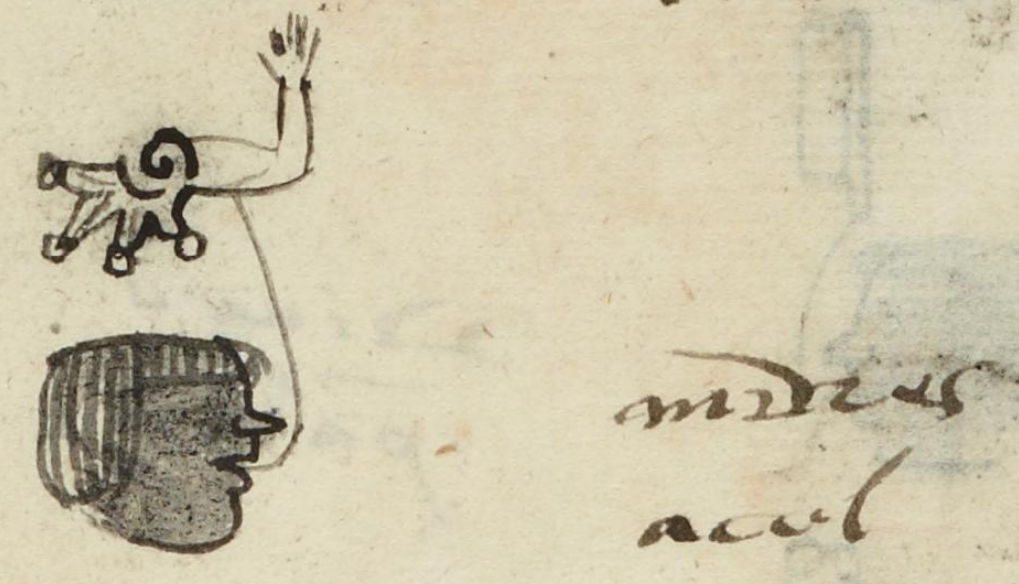Acol (MH634v)
This black-line drawing of the compound glyph for the personal name or ethnicity, Acol (“Shoulder,” "River Bend." or "An Acolhua," attested here as a man’s name), shows a profile view of a right arm. At the top of the arm, at the site of the shoulder (acolli) is where some water (atl) emerges. The water has a circular center with four short streams radiating out from the center. The streams here end in the usual droplets (sometimes seen as green stones), but no obvious turbinate shells.
Stephanie Wood
The water can provide a phonetic indicator for the word acolli (shoulder), or it could have a semantic role if "river bend" is meant.
Unlike the shoulders of the Codex Mendoza, in this glyph a bone is not protruding from the arm (at the site of the emerging water). See Codex Mendoza (c. 1541) examples, below.
Stephanie Wood
acul
Acol
Stephanie Wood
1560
Jeff Haskett-Wood
agua, hombros, curvas, ríos, etnicidades, Acolhuas, Acolhuaqueh, Acolhuaque

acol(li), shoulder, https://nahuatl.wired-humanities.org/content/acolli
a(tl), water, https://nahuatl.wired-humanities.org/content/atl
col(li), something bent, https://nahuatl.wired-humanities.org/content/colli-1
El Hombro
Stephanie Wood
Matrícula de Huexotzinco, folio 634v, World Digital Library, https://www.loc.gov/resource/gdcwdl.wdl_15282/?sp=351st=image.
This manuscript is hosted by the Library of Congress and the World Digital Library; used here with the Creative Commons, “Attribution-NonCommercial-ShareAlike 3.0 License” (CC-BY-NC-SAq 3.0).












